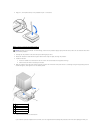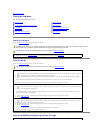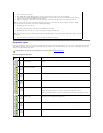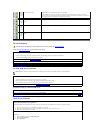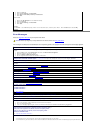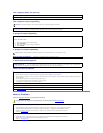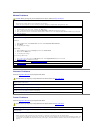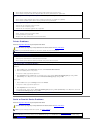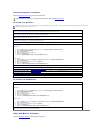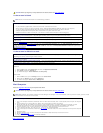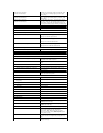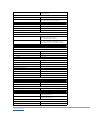
Mouse Problems
Network Problems
Fill out the Diagnostics Checklist as you complete these checks.
Power Problems
Fill out the Diagnostics Checklist as you complete these checks.
CAUTION: Before you begin any of the procedures in this section, follow the safety instructions.
Checkthemousecable—
l Ensure that the mouse cable is firmly connected to the computer.
l Check the cable connector for bent or broken pins and for damaged or frayed cables. Straighten bent pins.
Restartthecomputer—
1.Simultaneously press <Ctrl><Esc> to display the Start menu.
2.Type u, press the keyboard arrow keys to highlight Shut down or Turn Off, and then press <Enter>.
3.After the computer turns off, reconnect the mouse cable as shown on the in the Setup and Quick Reference Guide for your computer.
4.Start the computer.
Testthemouse— Connect a properly working mouse to the computer, and try using the mouse. If the new mouse works, the original
mouse is faulty.
Checkthemousesettings—
Windows XP
1.Click the Start button, click Control Panel, and then click Printers and Other Hardware.
2.Click Mouse.
3.Try adjusting the settings.
Windows 2000
1.Click the Start button, point to Settings, and then click Control Panel.
2.Double-click the Mouse icon.
3.Try adjusting the settings.
If you are using a PS/2 mouse
1.Enter system setup and ensure that Mouse Port under the Integrated Devices option is set to On.
2.Exit system setup and restart the computer.
Reinstallthemousedriver— See "Reinstalling Drivers and Utilities" forinformationonreinstallingdrivers.
Run the Dell Diagnostics
Check for interrupt request conflicts
CAUTION: Before you begin any of the procedures in this section, follow the safety instructions.
Checkthenetworkcableconnector— Ensure that the network cable is firmly inserted into both the network connector on the back of the
computer and the network jack.
Checkthenetworklightsonthebackofthecomputer— No light indicates that no network communication exists. Replace the network
cable.
Restart the computer and log on to the network again
Checkyournetworksettings— Contact your network administrator or the person who set up your network to verify that your network
settings are correct and that the network is functioning.
Check for interrupt request conflicts
CAUTION: Before you begin any of the procedures in this section, follow the safety instructions.
Ifthepowerlightisgreenandthecomputerisnotresponding— See "Diagnostic Lights."
Ifthepowerlightisblinkinggreen— The computer is in standby mode. Press a key on the keyboard or move the mouse to resume
normal operation.
Ifthepowerlightisoff— The computer is either turned off or is not receiving power.
l Reseat the power cable into both the power connector on the back of the computer and the electrical outlet.
l If the computer is plugged into a power strip, ensure that the power strip is plugged into an electrical outlet and that the power strip
is turned on. Also bypass power protection devices, power strips, and power extension cables to verify that the computer turns on
properly.



